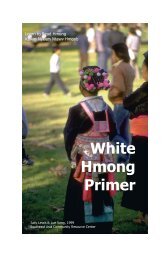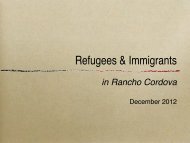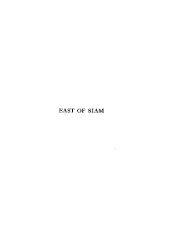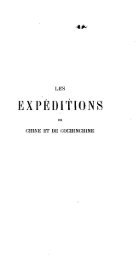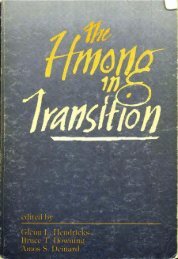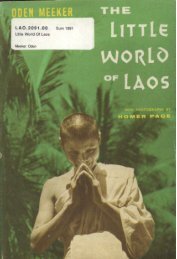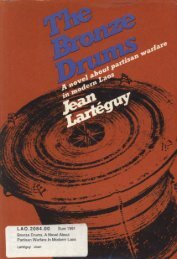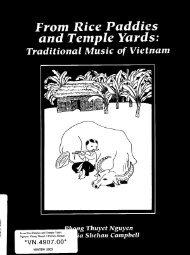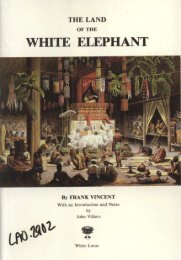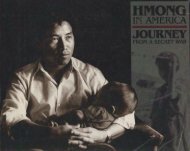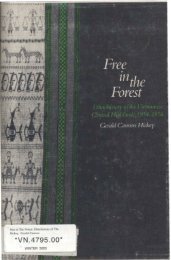PEOPLE
Grant, The Boat People - Refugee Educators' Network
Grant, The Boat People - Refugee Educators' Network
- No tags were found...
You also want an ePaper? Increase the reach of your titles
YUMPU automatically turns print PDFs into web optimized ePapers that Google loves.
l%e Bwt fiopk<br />
Fifty-one vessels, carrying 2011 boat people, landad in Aumalia.<br />
The tom1 numbcr of Indo-Chinese refugees sttded in Ausualia by<br />
September 1979, howevtr, was 25 WO (21 000 Vietname, 3OM<br />
Laotians and 1 OOO bpuchealw); by the middle of 1980 Ausdia<br />
will have redeemed im pledge at the UNHCR Gcncva confmna and<br />
settled 37 000. Most are flown at government expense from mpa<br />
in South-East Asia. Those with relatives in AudL arc given first<br />
priority, Selection is then made on the basis of pnst associations withm<br />
Ausmlia and integration prospects, including job skills and ability<br />
to speak English. However, as a reminder that this is a humanitarian<br />
program, a number of 'bud to settle' casts (unskilled mple without.<br />
English) are deliberately chm. Most of the resettlement cxpenseu<br />
art borne by the government, although charitable bodies also play<br />
a role. The cost in pubiic funds is abut $2500 for each refugee.<br />
A national poll conducred by the Age in June 1979 (before he<br />
promisc to UNHCR to take more refugee) showad that Australians<br />
had mixed feclinp about the new arrivals. While 23 pcr cent thought<br />
Australia should continue to accept refugees from Indo-China, only<br />
7 per cent drought more should be taken. Against this, 30 per cent<br />
thought fewer should come, while 37 per cent went further and said<br />
no more should be accepted,<br />
The poll's negative finding could he partly expiained by reservations<br />
on the political left and among trade unions. They had<br />
opposed the commitment of Australian troops to Vietnam and now<br />
argued that the refugees were a continuing conquence of that war.<br />
With increasing unemployment, Australian workem also tended to<br />
see refugees as a threat to their liveliho6d. Immigration to Australia<br />
has traditionally servcd the political interests of the conwatives<br />
(who favour a competitive labour market md anti-communist immigrmts)<br />
md the Viemamese seemed to fit that tradition. Another factar<br />
was that nvo of the three communist parties in Australia were<br />
aligned with Mo~ow and Peking, and bitterly opposed over Vietnam,<br />
giving the refugee issue a high profile in trade-union politics,<br />
In the state of Queensland, a riot broke out and arrests wm made<br />
when resettled Viemarncse gathered to protest against two visiting<br />
unionists from Hanoi. Some antagonism to the refugees has ako<br />
been shown by Austrnlims who are themselves immigrants, or of<br />
immigrant parents,<br />
Australia's consemtive Libml/Country-party coalition govmment<br />
was also, however, in a quandary, because racipl politics in<br />
Austrmlia had always been active on the extreme right, especially in<br />
coune electorates. The Australian Ltaguc of Rights distributed a<br />
pamphlet which asked: 'Why should loyal Ausaalians, including<br />
many who risked their lives to dcfmd the nation, be smeared n racist<br />
and undesitablt because they protest against an immigration policy<br />
which, if continued, must ruin Australia as it is ruining other<br />
countries?' Some Austr~lian conservatives used the arrival of the<br />
bmt people to advocate the acceptance of white Rhodesian refugees,<br />
when their time comes. However, as both the tibtraI/Counuy party<br />
government and the Labor party opposition evidently have problems<br />
about the refugee question within their own ranks, the boat<br />
pcoplc have not kome an iswe beween the two main parties and<br />
have been able to settle in with considerable success.<br />
When the refugees fir~t arrive in Australia they arc sent to migrant<br />
centres; employment opportunities determine where they go from<br />
there, It is difficult to measure the exact number of refugees in each<br />
Australian state huse interstate movement is common: families<br />
and individuals mwe to join relatives and friends; single young men<br />
(who are 57 per cent of the total rescttIed) are also highly mobile.<br />
At present, 10000 are in New South Wales, Victoria ha8 7500 and<br />
South Ausmlia, Western AusmIia and Queensland each has 2500.<br />
Despite local unemployment, difficulties with English and lack<br />
of recognized qualifications, in Victoria about WOO Indo-Chinese<br />
refugees (or nearly half) have found jobs, especimlly in manufamring,<br />
which is the mmt competitive sector of the labour market, and<br />
in the automotive industry. It is not uncommon to find academics<br />
and professionals on a production line or ding fmres on Melbourne's<br />
public transport, Some refugees find he housing centres<br />
inadquatt because there are no cooking facilities mnd the food there<br />
does not suit them, There have also been incidents of violence in<br />
these centres, In 1979 fighting among rival factions of Vietnamrefugees<br />
was rcporttd, involving about a hundred Vietnamese men<br />
in the grounds of a centre in Adelaide and resulting in the stmbbing<br />
of a 23-year-old man. But, until hey have learned English and<br />
bccome mploycd, it is difficult for them to move from the ccntres.<br />
Through church groups and community agencies, the federal




